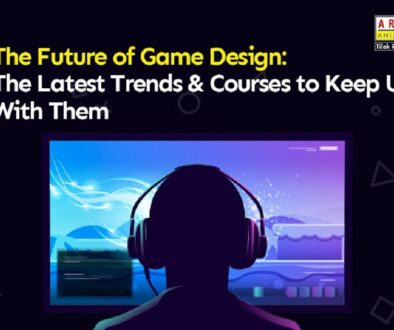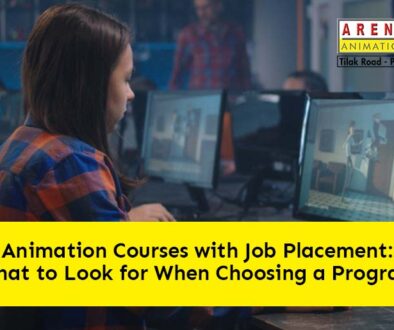Animation of User Experience: How Motion Graphics Enhance UI/UX Design
Animation has emerged as a powerful tool in the user interface (UI) and user experience (UX) design technologies in the present context. It has become an integral part of the design process, which involves websites, mobile apps, and other aspects.
So, animation has helped create dynamic and engaging user experiences. Let us explore its role in UI/UX motion design and know-how motion graphics can help elevate user experience.
Animation’s Role in Design
Animation designs go beyond simple visual aesthetics and serve functional purposes. That is why they are used strategically to guide users, provide feedback, and create a connection. It leads to a memorable and enjoyable interaction with different digital products.
Designers and developers must understand the principles of animation to implement them in UI or UX designs that can impact the success of their respective projects.
- Improved Usability
Animation is crucial in improving the design’s usability. It is because well-designed animations can guide users and make things easy for them to understand how a system works and how to interact with it.
For example, animations can highlight interactive elements, such as navigation menus and buttons, to give visual cues to users on where to tap or click.
- Enhanced Feedback
Animation can also provide feedback on various user actions. It helps them understand the outcome of their respective interactions.
For example, a color-changing button or a shape clicked when selected informs users that their actions are registered. It also makes them confident about their respective interactions with the interface.
- Emotional Connections
Animation improves the user experience by creating several emotional connections within systems. It is because the well-crafted designs can evoke emotions and create a sense of surprise for all users. It helps them leave a lasting impression on everyone.
For example, playful animations that react to user interactions can create a sense of delight, which makes the experience enjoyable for everyone.
- Visually Engaging Information
Animations can help tell a story or convey necessary information in one of the most visually engaging manners. For example, product tours, data visualizations, animated infographics, etc., can help users understand complex concepts easily. Animations also simplify complex interactions, such as onboarding experiences and step-by-step tutorials, which make it easier for users to learn and use products.
Motion Graphics Examples
Here is a breakdown of how motion graphics can enhance UI/UX design.
- Micro-Interactions
These small and subtle animations respond to user actions, such as scrolling or swiping buttons. Such animations provide instant feedback to the users by making their interactions more enjoyable and engaging.
For instance, if a user hovers over a button, it may animate or change color, which indicates it is clickable.
- Transitions
These animations concur when moving from one screen to another. The best examples include switching between screens on a mobile app or navigating website pages.
Well-designed transitions can create a seamless flow between different parts of the interface. It helps users understand the information in an organized manner.
- Loading Animations
These animations indicate that a process is underway, such as loading a page or content, is underway. Designers can use such motion graphics instead of showing static loading spinners to create visually interesting animations. It can help keep the users engaged during the waiting period.
For example, a loading animation can include different animated shapes, patterns, or icons that move in a visually appealing way. It will entertain the users and reassure them that the system will return soon.
- Onboarding Animations
These animations introduce new users to a particular digital product while making them understand how to use it. They can guide users through the key functionalities or features of products in a visually engaging manner.
For example, an onboarding animation for an app may include animated characters or illustrations demonstrating how to navigate it or perform certain actions.
- Feedback Animations
Such animations give users feedback on their actions and interactions across a particular interface. They can visually communicate the outcome of different user actions, such as errors or form submission alerts.
For example, users may witness a feedback animation when they submit a form successfully or a shake animation when they enter a wrong password.
- Navigation Animations
These animations can guide users through interfaces while helping them understand navigation flows. They indicate the active state of navigation elements, show the transition between different screens, and highlight current locations.
For example, a sliding navigation animation may occur when the user opts for a menu item. It indicates the selected item, which gets visually connected to the corresponding content. These visually appealing animations can make the navigation process easier for all users.
- Interactive Animations
These animations encourage user engagement and varied interface interactions. Designers can use them to create interactive elements that respond to user actions, such as clicking, dragging, or hovering.
For example, a draggable slider is the perfect interactive animation for users who want to slide back and forth to adjust the settings of their system. These animations can make interfaces more interactive and provide users with a sense of playfulness and control at the same time.
Final Thoughts
Animation is vital in enhancing the overall user experience in UI/UX design. Moreover, well-designed motion graphics improve usability, provide relevant feedback, create new connections, and simplify complex interactions.
So, designers can use animation differently to elevate the user experience of various digital products. Moreover, they must leverage such techniques to create interactive, visually engaging, and enjoyable user experiences that leave a lasting impression on every user.
You can enroll in a UI/UX design or animation course to learn more about such fields. If you are looking for several programs, consider UI/UX design course in Pune to accomplish your learning needs.
Such courses provide comprehensive training on animation techniques, UI/UX design principles, and tools to help aspiring developers and designers. It assists them in mastering the art of creating engaging and immersive user experiences.
So, you can enhance your career prospects while creating effective and innovative digital products to excite users. It will help you succeed in the ever-evolving design and technology world.
Hence, do not hesitate to explore the world of animation in UI/UX design and unlock the full potential of your designs to create impactful and user-centric digital products. Happy animation-making to you!
FAQs
Q1. How can animation improve user experiences of different digital products?
Ans: Animation provides visual feedback and guides users through different interactions. It also helps create emotional connections with a product to help improve the user experience.
Q2. What are some best practices for incorporating animation into UI/UX design?
Ans: Some best practices for incorporating animation into UI/UX design include keeping subtle animations, aligning with users’ mental models, considering performance, conducting necessary usability testing, and considering accessibility.
Q3. How can I learn animation for UI/UX design?
Ans: You can learn animation for UI/UX design through reputable animation courses, such as an animation course in Pune. The Arena animation UI/UX course provides training on various animation techniques, tools, and best practices to create better, more engaging user experiences.
Q4. When do I use animation in my UI/UX design?
Ans: You must consider the purpose and alignment of user experience goals when using animation in UI/UX designs. You can use animation for various purposes, such as user guidance and visual feedback, to attract the target audience, considering the design aesthetics.



